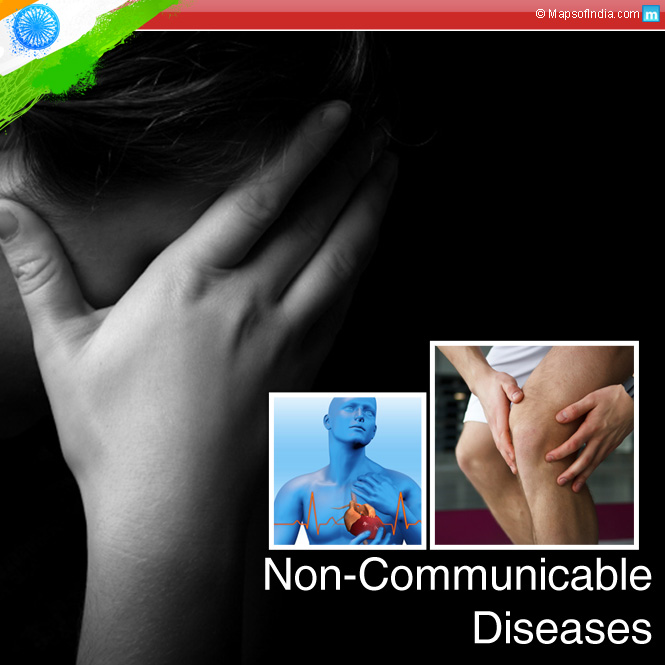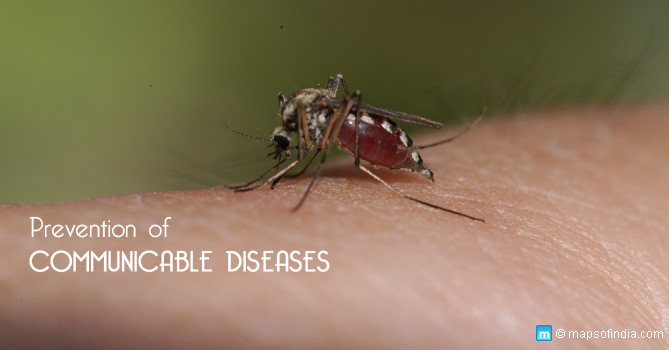There is no doubt about the fact that our country has been making great progress in the past 10-15 years. While there is a section of the population which still lives below the poverty line, there is another section of the population which has witnessed increasing prosperity and incomes accumulating at a rapid pace. We have seen our country making tremendous progress in the health sector with substantial changes in fertility and mortality rates, economic development and controlling communicable diseases. This is indeed good news but the irony is that this significant progress has also been the main factor causing a dangerous increase in non-communicable diseases (NCDs).
Genetic factors and changes in lifestyles have led to a growing incidence of NCDs, which is matter of serious concern for the health sector as well as the economy of the country as it is also one of the main causes of pre-mature deaths in India. Therefore, the health sector is witnessing a shift in focus from communicable diseases like smallpox, malaria, tuberculosis etc. to non-communicable diseases.
Top non-communicable diseases in India
- Cardiovascular disease
- Diabetes
- Chronic Obstructive Pulmonary/Respiratory Disease (COPD)
- Cancer
- Mental health disorders (Alzheimer’s/dementia, depression,and substance abuse disorders)
- Injuries
What are the major causes
- Changing lifestyle
- Rising income
- Fast food culture
- Alcohol consumption
- Growing consumption of tobacco
- Smoking
- Stress
- Lack of physical activity
- Obesity
- Hypertension
- Increased pollution
WHO’s and other statistical reports
According to the WHO, 53% of deaths in India is due to NCDs. By 2020, the WHO estimates that more than 60 million Indians will die from NCDs. Cardio-vascular diseases are the No.1 killer diseases in India. In 2010, as many as 1,20,000 cardiac surgeries were held in India. There were around 45 million coronary artery diseases diagnosed in 2010 alone and the figure is expected to rise to 60 million by 2015. India is home to an estimated 61 million people living with diabetes. Every year, nearly 500,000 people die of cancer in India. Crude estimates suggest there are 30 million people suffering from COPD in India. According to a study made by Bangalore’s National Institute of Mental Health and Neuro Sciences (NIMHANS), around 2 crore people need help for serious mental disorders, which do not include Alzheimer’s and Parkinson’s. Based on statistical report, the leading causes of deaths in India are cardiovascular diseases (24%), chronic respiratory diseases (11%), cancer (6%). Other NCDs and diabetes account for 12% deaths in India.
Impact on the economy
These diseases are not only affecting the urban population but also the rural population. According to a WHO report, India’s national income worth of $236 billion was spent between 2005 and 2014 on the growing incidence of NCDs. According to the World Economic Forum, NCDs will cost India almost $2.3 trillion by 2030, which is almost 35 times more than India’s total annual health spending.
The non-communicable diseases are expensive not only from the health point of view but also for the economy. The NCDs lead to a major setback on India’s productive workforce, with considerable loss of life in the age group of 35-60 years. This way, the NCDs affect the economy too. Treatment cost is very expensive for NCDs, almost double as compared to other health conditions and illnesses. Also, there is a great deal of disability and suffering in NCDs as these diseases require prolonged or life-long treatment. From the economic point of view, NCDs are also costly because these diseases undermine labour’s contribution to output.
What is the solution
A combined effort is needed to counter this serious health risk. It is to be noted that the burden of non-communicable diseases along with deaths will mount if massive genuine efforts are not undertaken whether by government, public health system, private sector, medical fraternity, and more importantly, by the people by themselves, to prevent and control NCDs and their risk factors.
The Government of India had launched several programmes to deal with the NCDs like:
- National Programme for Prevention and Control of Cancer, Diabetes, CVD and Stroke (NPCDCS)
- National Tobacco Control Programme
- National Cancer Control Programme etc.
How has it benefited the ordinary people? Like thousands of others, these too are inspired schemes meant to fatten the underworld of crony contractors and politicians. And as for us the general public, there is always the “Google” to access and make ourselves educated on any healthcare issue, without joining a medical college even as the public-paid health paraphernalia is reluctant in dispensing and disseminating the vital medical knowledge to the grass roots.
Early detection is important and prevention is still more important. Let us try on our own to make our lives healthy by following healthy eating habits, avoiding junk food, by doing exercises, and also by reducing smoking, alcohol and tobacco consumption. Let us also open our eyes and see where money collected from us has gone, the so-called budgets and outlays facilitating its disappearance, making us more and more vulnerable! A double whammy!
Related Information:
‘Leptospirosis’: A Deadly Disease in the Andamans
http://www.mapsofindia.com/my-india/health/communicable-diseases-are-still-prevalent in India
Japanese Encephalitis in India – Guidelines for Prevention, Control & Symptoms
Hepatitis B in India: Guidelines for Prevention, Symptoms, Causes, Risks & Treatment
Swine Flu Continues to Ravage India
Ebola Virus Outbreak – Is India Prepared?
India To Be Certified As A Polio-free Nation By WHO
Swine Flu: What You Need to Know and Do
Prevention of Heart Attack and Other Related Heart Diseases
Leprosy – Causes, preventions and eradication programme
Prevalence of Diabetes in India
Can Delhi Handle an Ebola Outbreak
The Fever : Vaccination Still An Elusive Proposal
A Reality Check on State of Mental Health in India
Sharp rise in non polio Acute Flaccid Paralysis after polio-free status
Growing Problem of Asthma in India





